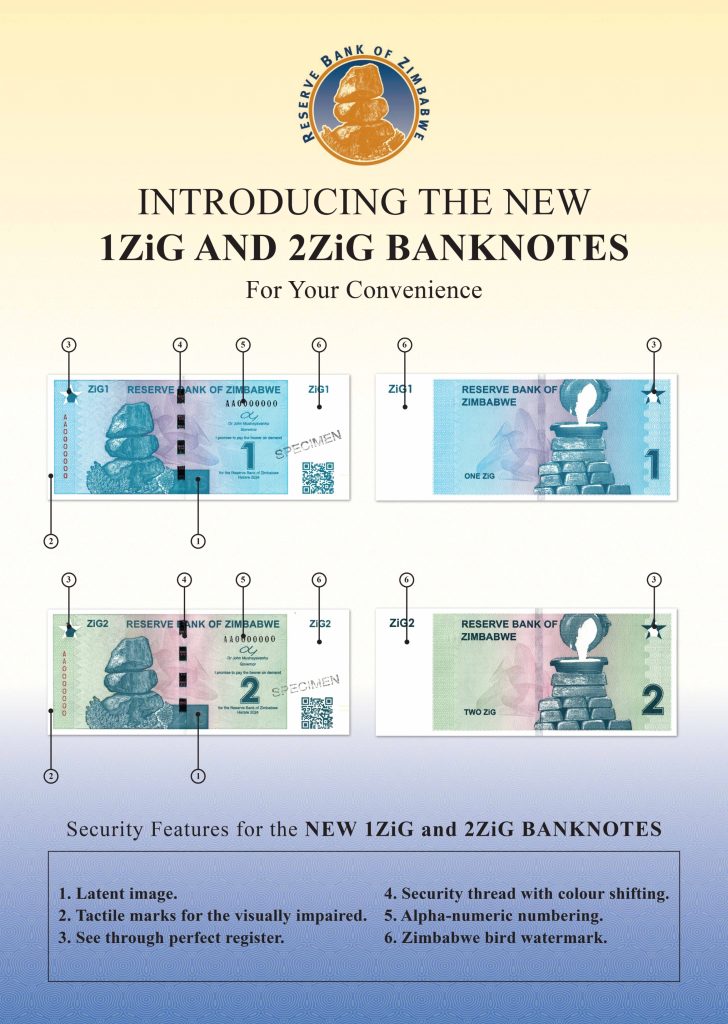
OPINION: Zimbabwe’s Gold-Backed Currency (ZIG), following The Footsteps of US Dollar (USD$)It is premature to predict the demise of Zimbabwe’s gold-backed currency (ZIG) based on the recent inflationary pressures the country is experencing.
In pursuit of economic stability and growth, Zimbabwe’s decision to adopt a gold-backed currency is a strategic attempt to learn from historical precedents, most notably from the United States, the origin of the US Dollar, Zimbabwe’s preferred currency.
While this path presents significant challenges, the potential benefits of a stable, gold-backed currency offer a foundation for economic recovery and long-term growth.
Historical Context and Lessons from the USA
The United States’ experience with a gold-backed currency provides valuable insights. From its adoption of a bimetallic system in 1792 to the eventual abandonment of the gold standard in 1971, the US encountered various phases of economic stability and instability. The gold standard brought confidence and predictability to the economy, something Zimbabwe aims to replicate.
Challenges of Implementing a Gold-Backed Currency
- Economic Instability: Just as the US faced economic fluctuations, Zimbabwe must address its own economic instability. Consistent efforts to maintain stability are crucial for the success of the gold-backed currency.
- Adequate Gold Reserves: Zimbabwe must ensure it has sufficient gold reserves to back its currency, mirroring the challenges the US experienced during its gold standard periods. The government should continue supporting and developing small-scale miners, who contribute significantly to Zimbabwe’s gold reserves. Around this time last year, Zimbabwe produced 26.2 tonnes of gold, with small-scale miners contributing about 63 percent of total gold deliveries.
- Inflation Control & Global Economic Dynamics: Zimbabwe needs robust mechanisms to manage the inflationary pressures it has faced in recent weeks, a challenge that also plagued the US during its gold-backed currency era. Zimbabwe must be prepared to adjust its monetary policy in response to global economic changes, much like the US, which had to adapt to international dynamics that ultimately led to the abandonment of the gold standard.
Benefits of a Gold-Backed Currency
- Enhanced Trust and Confidence: A gold-backed currency is crucial for Zimbabwe, as it helps restore public trust and confidence in the monetary system, trust that is essential for economic stability and growth.
- Increased Economic Stability & Encouraged Investment: By providing a stable and reliable medium of exchange, a gold-backed currency can help stabilize the economy and reduce reliance on volatile foreign currencies. A stable currency encourages both local and international investment, leading to economic development and growth. The Zimbabwe Investment and Development Agency (ZIDA) is making progress, as its one-stop shop for investment continues to yield results.
- Reduced Inflation: With careful management, a gold-backed currency can help control inflation, providing a more predictable economic environment.
Building Trust and Confidence
For Zimbabwe, building trust and confidence is essential to the success of the gold-backed currency. This involves:
- Transparent Management & Strong Institutions: Ensuring the management of gold reserves is clear and trustworthy is vital for building public trust. Developing robust financial institutions to manage the currency and uphold its value is equally important. Recently, the back-and-forth regarding US dollar limitations for travelers caused alarm and despondency, leading to the statutory instrument being revoked. Such instability underscores the importance of clear and consistent policy.
- Public Education: Educating citizens about the benefits and mechanisms of the gold-backed currency is key to fostering widespread acceptance and confidence. For over 15 years, Zimbabwe’s Generation Z has been using the US Dollar, it is the currency they know and trust. Convincing them to fully adopt the ZIG is not easy. Some street vendors have even mocked the ZIG, humorously calling for DNA champion Tinashe Mugabe to verify the gold backing the currency. This highlights the urgent need for the Zimbabwean monetary authorities to increase public education or reorient their outreach efforts.
Conclusion
Zimbabwe’s adoption of a gold-backed currency is a significant step towards economic recovery and growth. By learning from historical examples like the United States and focusing on building trust and confidence, Zimbabwe can overcome the challenges ahead and create a more stable economic future. With careful management and a commitment to transparency, the gold-backed currency has the potential to provide a solid foundation for the country’s economic development.
Disclaimer: The views and opinions expressed in this article are those of the author and do not necessarily reflect the official policy or position of My Afrika Magazine. All content provided is for informational purposes only and should not be construed as professional advice. My Afrika Magazine makes no representations regarding the accuracy, completeness, or reliability of the information contained in this article. Readers are encouraged to independently verify any facts presented. My Afrika Magazine assumes no liability for any losses, damages, or other consequences that may arise from reliance on the information provided in this article.



